- Register
- Log in to Tune-In
- Wishlist (0)
-
Shopping cart
(0)
You have no items in your shopping cart.
Beatles News
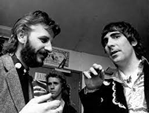
Drummer Ringo Starr was the last to become a member of the Fab Four, but his attitude was the central piece that held the Beatles together for a long time. He played a key role in ensuring the group did not end up like their mentor Elvis Presley at the height of their fame.
Ringo is considered one of the most famous and admired drummers ever because of his work with the Beatles, but he never allowed his achievements to get into his head. His calm and understanding nature came to bear when drummer Keith Moon who left The Who requested to become a member of the Beatles. However, Ringo was not bitter or sad about the development; he instead built a relationship that outlasted the Beatles itself.
Source: doyouremember.com
details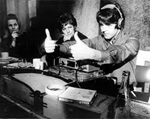
The Beatles’ “Flying” was inspired by 12-bar blues songs. Paul McCartney said it’s credited all members of the band because it’s not a real song. The tune appeared on the hit album Magical Mystery Tour.
The Beatles‘ “Flying” is a track with no lyrics that appears in the movie Magical Mystery Tour. Paul McCartney explained why the song features writing credits from all four of The Beatles. Subsequently, a notable band covered the song for a film based on Fab Four tunes.
In the 1997 book Paul McCartney: Many Years From Now, Paul discussed the origin of “Flying.” “‘Flying’ was an instrumental that we needed for Magical Mystery Tour so in the studio one night I suggested to the guys that we made something up,” he said. “I said, ‘We can keep it very very simple, we can make it a twelve-bar blues. We need a little bit of a theme and a little bit of a backing.'”
Paul said he was instrumental in writing the tune. “I wrote the melody,” he said. “The only thing to warrant it as a song is basically the melody, otherwise it’s just a nice twelve-bar backing thing. It’s played on t details
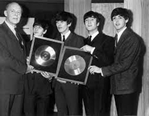
It’s hardly a stretch to say The Beatles dominated the 1960s, especially from 1963 onward. Their energetic debut album, Please Please Me, bowled over young English music fans. The United States finally caught up nearly a year later with the Fab Four’s historic appearance on The Ed Sullivan Show. The fact that The Beatles had 71 songs land in the top 100 of the Billboard singles chart is as impressive as their 20 No. 1 hits.
The Fab Four existed as a recording band for eight years, but their impact and success stretched well beyond that timeline. Need proof? Three of those top 100 songs came in the 1990s, and two of those were demos (“Free as a Bird” and “Real Love) released when their trio of Anthology albums saw the light of day. “Baby It’s You” also charted in the mid-1990s.
The Beatles found the top 100 three times in the 1970s, too. “Got to Get You Into My Life” and “Ob-La-Di, Ob-La-Da” found Billboard success in 1976, and “Sgt. Pepper’s Lonely Hearts Club Band” hit the charts in 1978, more than a decade after the album hit shelves. “The Beatles Movie Medley” smashed seven songs from their feature films into details

George Martin, popularly known as the “Fifth Beatle,” was in high spirits with the Beatles’ audition for EMI on June 6, 1962, after which the producer offered them a recording contract. However, he was not satisfied with the performance of the band’s drummer, Pete Best. Hence, the Fab Four had to bring in a newbie, Ringo Starr, to take charge of the drums, because they thought him better than their former drummer.
Within a month of joining the band, Ringo Starr was in jitters about his future with the Beatles due to a decision made by Martin.
After two failed prior attempts by the Beatles to record the song “Love Me Do,” Martin noticed that Starr could not keep up with the pace. In a bid to get the song out as quickly as possible, he decided to hire a session drummer, Andy White, to get the job done.
Martin revealed the reason for his decision was that the inexperienced Starr was not yet ready for a fast-paced recording session. “I didn’t rate Ringo very highly; he couldn’t do a roll — and still can’t — though he’s improved a lot since,” he said in the book Ringo: With a Little Help by Michael Seth Starr. “Andy was details
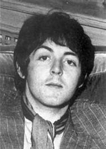
The Beatles‘ “Your Mother Should Know” was inspired by Paul McCartney’s interactions with his aunt. In addition, it was supposed to advocate peace between generations. Notably, its message was really out of step with the 1960s counterculture.
In the 1997 book Paul McCartney: Many Years From Now, Paul discussed the origin of “Your Mother Should Know.” “My Aunty Jin and Uncle Harry and a couple of relatives were staying and they were in the living room just across the hall, so I just went to the dining room and spent a few hours with the door open with them listening,” he recalled.
This environment inspired him to write “Your Mother Should Know.” He felt the song was “basic.” Paul felt he probably wouldn’t have written it if Aunty Jin wasn’t nearby.
Source: Matthew Trzcinski/cheatsheet.com
details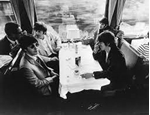
The Beatles wrote many songs that were love letters to various things and locations in the U.K. “Strawberry Fields Forever” and “Penny Lane” are both dedicated to locations they visited in Liverpool. Paul McCartney and John Lennon wrote one song in the early days of The Beatles as a “tribute to British rail.”
The Beatles first recorded “One After 909” in 1963 on the same day as “From Me to You.” However, The Beatles did perform it live earlier as The Quarrymen in 1960 and at the Cavern Club in 1962. The recorded version of the song wasn’t released until 1970’s Let it Be, the band’s final album. In a 1970 interview with Rolling Stone, John Lennon said he wrote the song around the age of 17 and claims it was primarily a solo job.
“I wrote it when I was 17 or 18,” Lennon said. “We always wrote separately, but we wrote together because we enjoyed it a lot sometimes and also because they would say, well, you’re going to make an album together and knock off a few songs, just like a job.”
Source: Ross Tanenbaum/cheatsheet.com

The Beatles’ “Come Together” and “Something” were together and initially charted at different positions. Billboard changed its rules so that A-sides and B-sides charted together. “Come Together” and “Something” hit No. 1 together in the United States.
The Beatles‘ “Come Together” and “Something” both topped the Billboard Hot 100 at the same time. This only happened because Billboard changed its rules. On the other hand, the songs did not perform as well in the United Kingdom.
The Beatles’ 1969 singles “Come Together” and “Something” initially charted at No. 23 and No. 20, respectively. Then, the songs reached No. 10 and No. 11, and then No. 2 and No. 3. Subsequently, Billboard changed its rules.
Now, A-sides and B-sides would be counted together. Because of this, “Come Together” and “Something” reached the top of the chart at the same time, making the Fab Four’s first pair of singles to do so. The same phenomenon happened to The Beatles’ later singles “The Long and Winding Road” and “For You Blue.”
Source: Matthew Trzcinski/c details

Heather Mills "struggled" to live in Paul McCartney's family home, claims her new documentary The Trials of Heather Mills, which airs on Channel 5 and looks back on her tough childhood and her tumultuous marriage to McCartney. According to Mirror, Mills and McCartney were first introduced by Piers Morgan in May 1999 at the Pride of Britain Awards in London where McCartney presented an award in his late wife Linda's name, who had unfortunately passed away due to breast cancer. The Here Comes the Sun singer and the former model married in 2002 at a lavish wedding in Glaslough, Ireland.
Source: Mary Anthony/inquisitr.com
details
Emmy-nominated actress, model and author Barbara Feldon joined host Kenneth Womack to talk about the "freedom and fun" of the 1960s, being a contemporary of the Beatles and her new memoir "Getting Smarter" on "Everything Fab Four," a podcast co-produced by me and Womack (a music scholar who also writes about pop music for Salon) and distributed by Salon.
Feldon, best known for portraying the striking, sophisticated superspy Agent 99 on Mel Brooks and Buck Henry's classic sitcom "Get Smart," started out as a showgirl and model in New York City before moving on to acting. In fact, she and her husband at the time, the charming Lucien Feldon-Verdeaux (whose shocking story she details in her memoir, which is available on her website), were living in a fifth floor apartment off Park Avenue when the Beatles arrived to play "The Ed Sullivan Show" (on which Feldon herself had previously performed as a dancer) in February of 1964. "We heard this roar coming up from the street," she explains to Womack. "And looking down over the parapet, we saw this mob of young women." When she asked what they were screaming about, someone yelled up, "It's the Beatles!"
Source: Nicole Michael/salon.com

Today marks St George’s Day and so Sir Paul McCartney has honoured the two late Georges associated with The Beatles. Firstly, his fellow bandmate George Harrison, who died in November 2001, aged 58. And also Sir George Martin, The Beatles record producer, who died in March 2016 at the age of 90.
On his Instagram account, Sir Paul McCartney posted a picture of the two Georges in the studio, as captured by his late wife Linda McCartney, who died in April 1998 aged 56. The 80-year-old wrote: “Happy St George’s Day to Georges everywhere - Paul.”
Macca has posted similar tributes to the pair of “Georges I have known and loved” over the past few years. In fact, he still “talks” to Harrison through the evergreen coniferous tree that the Quiet Beatle gifted him before he died. Speaking previously with All Things Considered, Sir Paul said how Harrison was very into horticulture and a great gardener.
Source: George Simpson/express.co.uk
details
Among the astonishing 250-plus shows that The Beatles played in 1963, a couple were especially poignant. On April 8, The Beatles were entertaining the Swimming Baths in Leyton, east London, while Cynthia Lennon was alone in Sefton General Hospital, Liverpool, giving birth to Julian. It was not yet necessarily the custom for fathers to attend births in 1963, but even so, Lennon would not have a moment to meet his first-born until April 11, squeezed between shows in Birkenhead and Middleton.Another significant gig was the August 3 booking at their former proving ground, The Cavern. Since the most recent of their 280-plus previous engagements at the Mathew St cellar on April 12, the tenor of the fans had changed. Quoted in Spencer Leigh’s book, The Cavern, club doorman Paddy Delaney recalled, “The crowds outside were going mad. By the time John Lennon had got through the cordon of girls, his mohair jacket had lost a sleeve. I grabbed it to stop a girl getting away with a souvenir. John stitched it back on.”
Source: Danny Ecclesto/mojo4music.com
details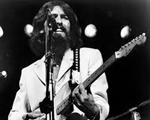
In 1971, George Harrison put on the Concert for Bangladesh, and Ringo Starr was the only former Beatle to perform. Both John Lennon and Paul McCartney worried about the optics of performing with former bandmates and declined to join the event. Starr admitted that Harrison also had these concerns; because of this, he said Harrison didn’t expressly invite him. Regardless, Starr showed up to perform.
In 1971, Harrison and Ravi Shankar hosted two benefit concerts at Madison Square Garden to fund relief efforts for refugees from the Bangladesh Liberation War. He welcomed a number of musicians, including Eric Clapton, Bob Dylan, Leon Russell, and Billy Preston.
The benefit concert was a success and set the tone for the celebrity benefit concerts to come. Beyond that, though, it helped raise awareness of a conflict many Americans knew nothing about.
Source: Emma McKee/cheatsheet.com
details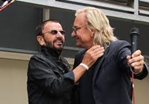
Ringo Starr has never shied away from getting a little help from his friends. The drummer’s close buddies for many years included his Beatles bandmates, who assisted him in his solo career. George Harrison helped Ringo with solo project days after injuring himself on a mountain hike, for instance. Yet Ringo’s musician friends extended beyond The Beatles.
1. Ringo Starr had an ‘intimate relationship’ with Keith Moon of The Who
Ringo and Keith Moon had different drumming styles — understated elegance compared to bombastic bashing — yet their personalities meshed well. One of Ringo’s former girlfriends said he had an intimate relationship with Moon, meaning they could hold entire conversations without speaking.
The Who drummer once angled for his friend’s job in The Beatles, but that didn’t hurt their relationship. Moon babysat Ringo’s son Zak. In a full circle moment, Zak became The Who’s touring drummer later in his life.
Source: Jason Rossi/cheatsheet.com
details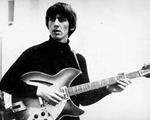
The Beatles are the most covered bands of all time. Even in the 1960s, bands and artists were already taking songs from The Beatles and putting their own spin on them. While the members of The Beatles didn’t love every cover, they did receive royalties, so they were mostly okay with them. However, George Harrison called one Beatles song cover “rubbish” and didn’t want to be associated with it.
George Harrison didn’t write many Beatles songs, as Paul McCartney and John Lennon shared most songwriting duties. However, Harrison did get a chance to shine every now and then, and his songs appeared more frequently in The Beatles’ later projects. His song, “If I Needed Someone”, was released in 1966 with Rubber Soul. It’s a love song Harrison dedicated to his then-wife, Pattie Boyd.
Source: Ross Tanenbaum/cheatsheet.com
details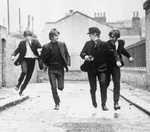
The Beatles‘ “All You Need Is Love” reuses the chorus of “She Loves You.” Paul McCartney revealed this was his idea. In addition, “All You Need Is Love” quotes from the famous English folk song “Greensleeves.”In the 1997 book Paul McCartney: Many Years From Now, Paul said “All You Need Is Love” references other songs because he decided it should. “‘All You Need Is Love’ was John’s song,” he said. “I threw in a few ideas, as did the other members of the group, but it was largely ad-libs like singing ‘She Loves You’ or ‘Greensleeves’ or silly little things at the end and we made those up on the spot.” For context, you can hear a snippet of “Greensleeves” in the song starting at three minutes and 13 seconds in. Paul sings the chorus of “She Loves You” around three minutes and 22 seconds in.
Source: Matthew Trzcinski/cheatsheet.com
details